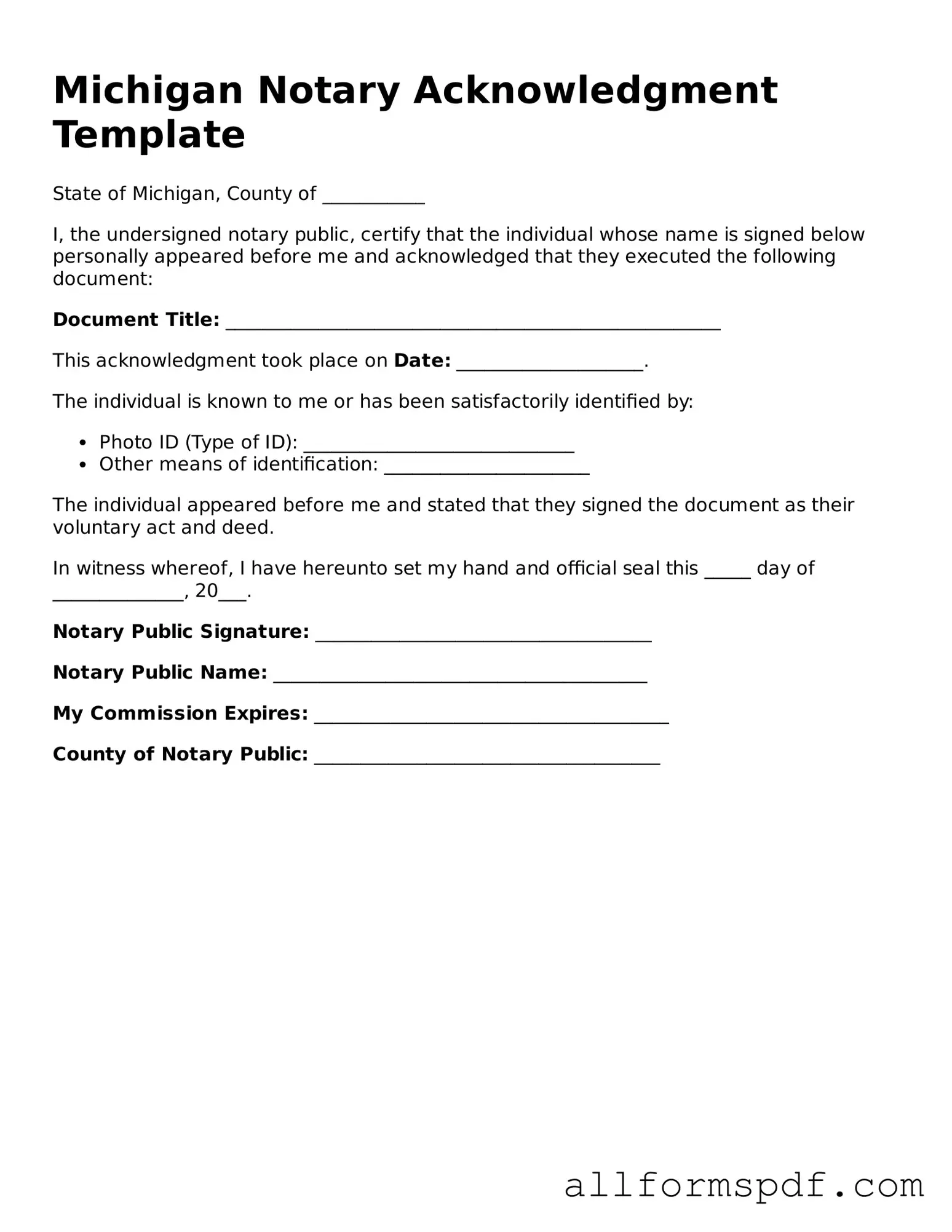Filling out the Michigan Notary Acknowledgement form can seem straightforward, but several common mistakes can lead to complications. One frequent error is failing to include the correct date. Notaries must ensure that the date of the acknowledgment matches the date the signature was made. This inconsistency can raise questions about the validity of the document.
Another common mistake is neglecting to provide the signer's name clearly. The name should match the identification presented to the notary. If there is a discrepancy, it could result in the document being challenged or rejected. Clarity is essential for maintaining the integrity of the acknowledgment.
People often forget to sign the form themselves. The notary’s signature is crucial, but so is the signature of the person whose acknowledgment is being notarized. Without this, the form is incomplete and may not hold up in legal situations.
Additionally, some individuals overlook the requirement for the notary to fill in their commission expiration date. This detail is vital for confirming that the notary was authorized to perform the acknowledgment at the time of signing. Leaving this blank can lead to questions about the notary's authority.
Another mistake involves using an incorrect notarial seal. The seal must be clear and legible, containing the notary's name and other required information. An illegible seal may render the acknowledgment invalid. It is essential to check the seal before finalizing the document.
Some individuals also mistakenly believe that a notary can provide legal advice or assist with the content of the document. Notaries are not authorized to interpret legal documents or provide guidance on how to fill them out. This misunderstanding can lead to improperly completed forms.
In addition, forgetting to check the jurisdiction can cause issues. The Michigan Notary Acknowledgement form is specific to Michigan and may not be valid in other states. Ensure that the form is appropriate for the intended use.
Lastly, people may rush through the process, leading to careless errors. Taking the time to review the completed form thoroughly can prevent many of these mistakes. Attention to detail is crucial in ensuring that the acknowledgment is valid and enforceable.
